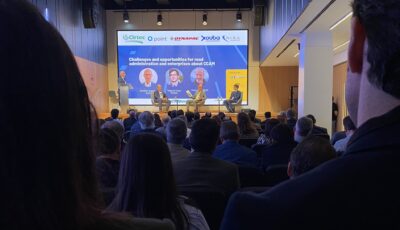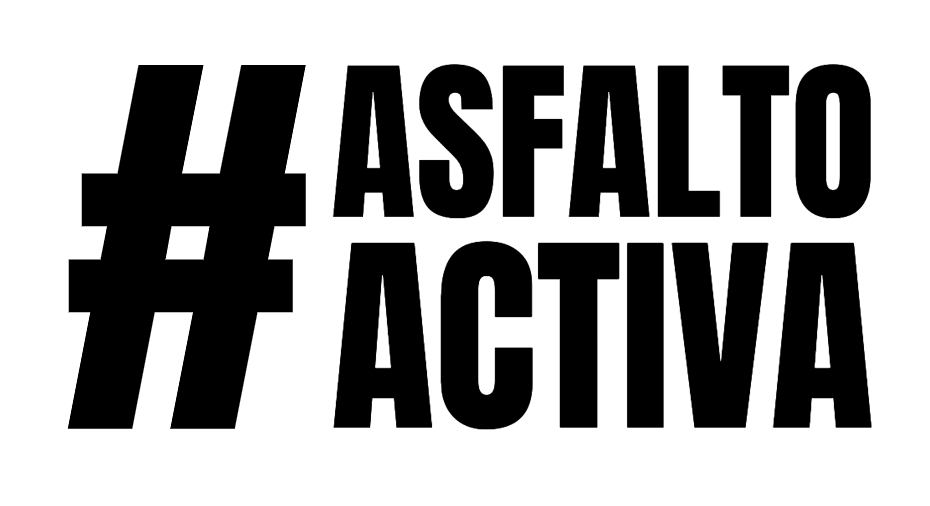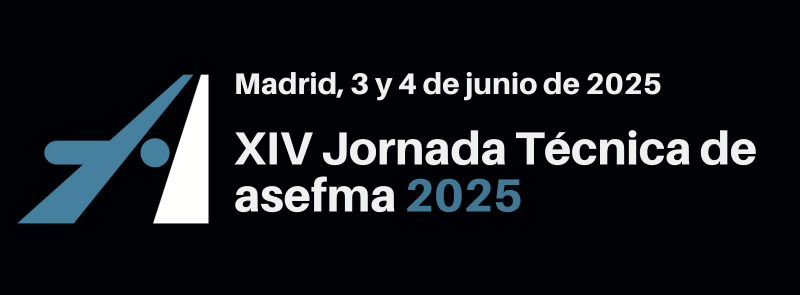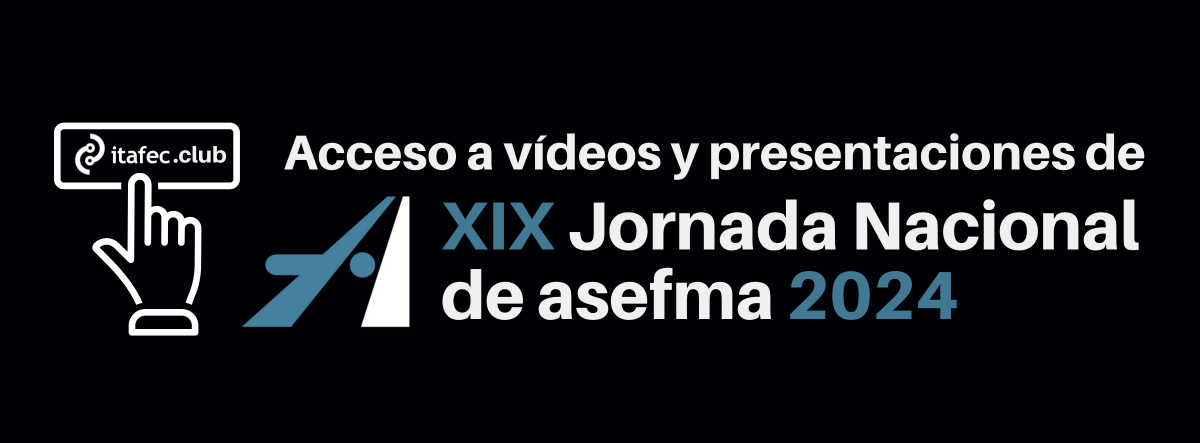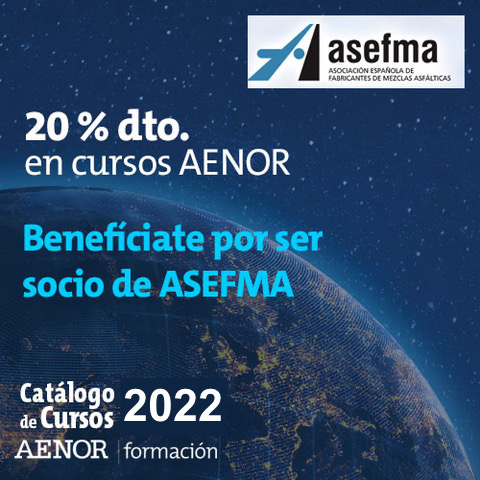ASEFMA y ZAS anuncian las doce comunicaciones seleccionadas para el congreso internacional ICA 4.0
La Asociación Española de Fabricantes de Mezclas Asfálticas (ASEFMA) y su homóloga eslovena ZAS, como entidades organizadoras, hacen públicos los trabajos aceptados para integrar el programa técnico del congreso internacional sobre asfalto 4.0 (ICA 4.0, por sus siglas en inglés).
El comité técnico de ICA 4.0, formado por miembros de ASEFMA y de ZAS, hace públicas las doce comunicaciones que entrarán en el programa del congreso internacional sobre asfalto 4.0, que se celebrará en el espacio Meeting Place situado en la calle Orense de Madrid y podrá seguirse en directo vía streaming HD y en VR/2D desde la aplicación PDV by itafec. Este evento, que también cuenta con el apoyo de EAPA y el patrocinio de MOBA Mobile Automation (plata) y Fliegl (bronce), se celebrará los días 20 y 21 de septiembre de 2022.
Las doce comunicaciones seleccionadas, todas ellas de gran calidad técnica e interés para el sector y que serán publicados en las actas finales del congreso, proceden de cinco países europeos: España (4), Alemania (3), Eslovenia (2), Países Bajos (2) y Francia (1). Sus autores dispondrán de 15 minutos para exponer sus trabajos en inglés, lengua oficial del evento, durante el congreso internacional ICA 4.0.
Los trabajos, que estarán disponibles en la app PDV by itafec para aquellas personas que se hayan inscrito en la modalidad presencial o virtual, son los siguientes:
-
1. e-ticketing, más que una gestión sin papeles
Título original: e-Ticketing, more than just paperless management
Autor: José Luis Peña (ASEFMA)
Resumen: E-ticketing represents the last step in a continuous process of information transmission among suppliers, carriers, recipients of materials, and verifiers. We are all used to seeing how paper invoices and delivery notes have been replaced in our daily lives by digital documents that can be stored on various types of electronic devices.
There are already a significant number of companies employing paperless management systems on road works, but what is still rare is that this paperless management is transferred to the end customer: the road administration.
Various public administrations in the USA, supported by the Federal Highway Administration, are making a major effort to implement e-ticketing in road paving works. Thus, the EDC (Every DayCounts) initiative has e-ticketing as one of its development objectives.
This publication aims to show the importance of this digitalization process in the day-to-day task of road works. It is not only about automating processes and facilitating the management of information, but it also generates a process of collaboration between the various agents involved in the works, breaking the climate of suspicion that commonly exists between contractors and clients. This collaborative model is very similar to that generated by BIM (Building information modeling) since the open sharing of information forces all stakeholders to exercise transparency that benefits the common good. In this way, something as apparently “neutral” as data management can help to break down barriers between clients and suppliers, providing a positive social environment.
The effective implementation of e-ticketing requires the development of data management platforms with compatible standards. In this way, the flow of information is instantaneous, and incidents and problems can be detected prematurely. This compatibility of platforms requires sectoral work similar to that carried out with BIM and IFC models. Given the multiplicity of contractors, it is clear that the road administrations must be more operational for the management and coordination of these tasks.
-
2. Pavimentación asfáltica sostenible: monitorización en tiempo real de la reducción de emisiones de CO2 durante la producción de mezclas asfálticas templadas
Título original: Sustainable road paving: Real-time monitoring of CO 2 emissions reduction during warm mix asphalt production
Autores: Pablo Álvarez (Becsa), Aida Marzá (Becsa), Vicente Collado (GVA), José Luis Espinosa (Becsa) y Carlos Quintana (Becsa)
Resumen: Due to the digital transformation that our industry is undergoing, the use of digital tools to automate, monitor, and improve the way has increased in the last few years. The adequate application of these technologies to our sector, a concept known as Asphalt 4.0, allows the manufacturers of bituminous mixtures to optimize conventional activities, such as asphalt plant management, manufacturing, and transport/supply.
Warm Mix Asphalt (WMA) is a real alternative to minimize environmental impact in terms of energy consumption and greenhouse gas emissions associated with the manufacture of bituminous mixtures. In the case of WMA technologies, the bitumen foam and the use of specific additives joined to the boost of the road administrations and the agreement of the manufacturers are allowing a slow but continuous increase in the use of this kind of technique which is easy to introduce. WMA production is considered a real example of the application of the initiatives established by the European Green Deal, which urges a reduction of emissions associated with the manufacturing processes and supply with the final aim of becoming “climate neutral” in 2050.
From the point of view of the manufacturer, it is considered of vital importance to control the process of manufacturing by monitoring specific real parameters of consumption with the purpose of optimizing all the steps and checking the expected reduction of emissions regarding the manufacturing of the equivalent Hot Mix Asphalt(HMA). The use of this digital technology can promote transparency, traceability, and innovation. In addition, these changes can result in greater efficiency of the organization, better guarantee and durability of the offered products and services, and savings of time and resources.
Thanks to the digital transformation performed in the management of asphalt plants and to the higher grade of implementation of the concepts derived from Asphalt 4.0, BECSA has developed a platform, which is located in the cloud, in which is possible to monitor the most important parameters of the operating process including the estimation in real time of the CO2emissionsassociated to a specifically manufactured mixture which allows knowing the scale of reduction in emission gases reached for specific paving work.
In the present work, it has been detailed all the data obtained during the paving of the parking built to promote car-sharing next to the road CV-17. This initiative was promoted by Conselleria dePolítica Territorial, Obras Públicas y Movilidad of the Generalitat Valenciana.
-
3. PAV-DT: Nuevo sistema de monitorización de pavimentos para el mantenimiento predictivo
Título original: PAV-DT: New pavement monitoring system for predictive maintenance
Autores: Julia Irene Real (UPV), Laura Andrés López (UPV), Juan Ramón Sánchez (UPV), Francisco J. Vea (Becsa), María del Mar Peiró (Becsa)
Resumen: Despite the huge public budget effort for road pavement maintenance, the European road network (5.5M km) is not in an acceptable condition. A section of pavement is in “poor condition” when it contains distress of significant severity that could adversely impact the safety of road users.
Current pavement maintenance strategies are mainly based on corrective maintenance which is an inefficient and costly approach.
Nowadays, to optimize the resources invested in maintenance activities is necessary to apply preventive maintenance methodologies. Prior to this maintenance of the pavements, periodic auscultation campaigns are considered, together with visual inspections, to detect the deterioration of the pavement. In them, the InternationalRoughness Index (IRI) is measured, which indicates whether there are irregularities in the pavement. However, current high-precision systems are time-consuming and/ or expensive procedures.
PAV-DT is presented as a solution that achieves: on the one hand, obtaining an auscultation vehicle from a conventional vehicle that is capable of registering, at conventional operating speed(80km/h), the International Roughness Profile(IRI), all with high precision and on the other, as an added value the system is capable of providing a survey of detected defects, a prediction of the evolution of roughness and a maintenance plan, all this automatically, continuously and in realtime.
A prototype has been developed of high precision. A low‐cost hardware configuration that can be installed in any type of vehicle. The information registered by these hardware units is filtered and treated by innovative algorithms obtaining accurate IRI evaluations comparable to a profilometer. In addition to this, PAV‐DT is able to deliver specific information on the location of defects, classifying them and indicating their severity.
Tests have been carried out on real road sections where results have been obtained that verify the use of this system as an auscultation system.
-
4. Evaluación de riesgos basada en el uso de sistemas de apoyo en tiempo real a la compactación y pavimentación
Título original: Risk assessment based on the use of real-time paving and compaction support systems
Autores: Denis Makarov (Boskalis Infra B.V), Natascha Poeran (Boskalis Infra B.V), Berwich Sluer (Boskalis Infra B.V)
Resumen: Real-time paving and compaction support systems have been widely implemented in the asphalt construction sector. It is shown that the use of such systems can provide paver and roller operators with a deeper insight into their activities with further improvements of used operational strategies. Moreover, it is found that better-informed operators might prevent over-, under-, and poor compaction of the paved asphalt layer with a contribution to the process and end-product quality.
When the construction phase is over, the operational phase of the newly built road begins. The data that is collected and stored during asphalt mixture design, production, and also during the construction phase could help with the enhancement of Life Cycle Analysis (LCA) (e.g., better planning of the maintenance activities, re-construction, fast track of problems identification and theirsolutions).
Therefore, the main objective of this research is to develop a framework for coupling the data from different phases of the asphalt road life cycle that forms a clear representation of the risk level that can occur after the road has been built. A novel method is developed to translate the data of (1) the used asphalt mixture material properties (e.g., laboratory tests), (2) temperature of the paved asphalt layer, (3) compaction status(i.e., number of rollers passes over the certain partof the asphalt layer) into a risk assessment map.
A prototype is developed and implemented in a case study to investigate the feasibility of the proposed framework. It’s shown that with the risk assessment map: (1) construction machine operators can reflect on their work, almost in real-time conditions, and (2) the project manager and the client can have a preliminary analysis of the performed work with an ability to improve LCA.
-
5. Biblioteca de objetos (OTL) para crear gemelos digitales en construcción. Estudio de caso sobre construcción de pavimentos asfálticos
Título original: Object Type Library (OTL) as aground truth for building digital twins in construction. An asphalt construction case study.
Autores: Berwich Sluer (Boskalis Infra B.V), Denis Makarov (Boskalis Infra B.V), Natascha Poeran (Boskalis Infra B.V)
Resumen: The Digital Twin (DT) concept has become a powerful solution for designing a digital replica of a physical object, process, or system. With a vast demand, DT plays a significant role in building a new construction era providing abilities to generate valuable insights into the original source of data (e.g., physical system) by modeling and running numerous simulations (e.g., performance analysis). Being adopted by industry and academia the concept faces implementation problems, for example, accurate digital representation of different systems that work together to form a bigger system or a process.
Therefore, this paper presents a framework that uses an ontology as a central block to adopt a common transformation language that assists the definition of objects and modules of a digital replica and builds a base for further data transmission between these objects/ modules. A prototype is developed and implemented in a case study of asphalt construction projects. The test results show that the proposed framework can help provide developers with an effective way of building DT that consists of several closed operator support systems and overcome interoperability issues that usually occur in the construction sector. Additionally, abilities to relate asphalt construction process quality and final product quality are examined.
-
6.Desafíos en la implementacion de un sistema de gestión de activos de pavimentos en las carreteras estatales de Eslovenia
Título original: Challenges faced in the implementation of pavement asset management system on state roads in Slovenia
Autor: Mitja Jurgele (DRI Investment Management)
Resumen: State roads in Slovenia are currently managed primarily by the “Worst First” system of prioritization. In this type of system, the roads in poorer condition get priority in the planning of the rehabilitation works. The system is easy to understand and implement. However, it has some drawbacks, such as lower effectiveness of money invested. In addition, there is almost no prioritization of roads with higher traffic volumes over those with lower traffic volumes.
To make the management of pavements more effective, a pavement management system (PMS) based oncost-benefit ratio is currently being developed on the dTIMS platform. The platform is a tool that enables data manipulation, life-cycle cost analysis, and financial optimization. With the implementation of the PMS, additional knowledge regarding network performance is gained. The article presents the basic characteristics of the PMS system and the challenges that are faced with its implementation.
-
7. Segregación térmica durante la puesta en obra de mezclas asfálticas
Título original: Temperature segregation in asphalt mixture placement
Autor: Rok Roser (Kolektor)
Resumen: This paper presents the problem of temperature segregation, which occurs during the placement of asphalt mixture. The problem is caused by low-temperature areas in the asphalt layer, which lead to low-density areas. As a result, asphalt pavement properties are impaired, leading to faster deterioration. Experiences in the asphalt industry show that temperature segregation is a common problem that is present even with good paving conditions.
In addition to presenting the problem of temperature segregation, this article describes the use of infrared thermography to detect temperature differences in asphalt pavement. The shape of cold areas and the resulting damage are described, and measures to prevent temperature segregation are presented.
-
8. Digitalización y tecnología de sensores: ¿la clave del éxito?
Título original: Digitalization and sensor technology… the key to success?
Autor: Ersun Görener (infraTest Digital Solutions)
Resumen: The e-monitoring of values in the asphalt pavement AFTER the paving is essential. Actually, we do not know what is happening to the pavement after the paving. We put a lot of effort into mix design where we use empiric temperature distributions. Mostly based on air temperature and using models for the vertical effect of it. This results in a theoretical assumption on the vertical temperature distribution. Working this way doesn’t take into account the regional and local peculiarities. Shadows on the road surface, different aggregate colors on the surface have or may have an impact on the vertical temperature distribution.
Using new sensors and transmission technologies is possible to measure these types of values and transmit them wirelessly. This gives a completely new outlook for the design of roads and helps to understand what is happening inside.
-
9. Cómo ahorrar energía, CO2 y costes con tecnología de transporte moderna durante la puesta en obra de mezclas asfálticas
Título original: How to save energy, CO2 and costs with modern transport technology in asphalt construction and installation
Autores: Martin Fliegl (Fliegl Bau- und Kommenualtechnik), Michaela Hess (Fliegl Bau- und Kommenualtechnik)
Resumen: Using modern (transport) technology to avoid premature road damage already during the asphalt installation process – Protecting the environment through lower CO 2 emissions and saving resources through lower power consumption.
This paper is about the problems associated with asphalt paving and an approach that enhances the paving quality and protects the environment and resources.
Usually, three major problems occur in asphalt paving. These include mechanical, thermal, and binder segregation. The push-off technology provides a solution to meet the requirements in asphalt paving. If the asphalt is pushed off, instead of dumped, there is a continuous mixing of the grain structure and temperature during the entire unloading process. The asphalt is unloaded “bit by bit” into the paver due to the push-off mechanism. Thus, both, cool and hot asphalt and coarser and finer grain sizes are evenly paved
-
10. SIMEPU: un sistema integral de mantenimiento eficiente para pavimentos urbanos
Título original: SIMEPU : an efficient integral maintenance system for urban pavements
Autores: Jose Ramón López (Pavasal), Juan Sánchez-Robles (CPS), David Llopis (UPV), Tatiana García (UPV), Roberto Paredes (UPV), Eugenio Pellicer (UPV)
Resumen: Efficient management of the resources assigned to maintenance of public road pavements requires that information about their state is updated and in a way that helps the most appropriate decision in each moment. This process is widely covered for the management of large road networks, made by surveying with high-performance vehicles.
The main drawback of this process is the cost of this equipment, which is not available to all public administrations, especially those that manage small local networks, such as councils or town halls. In these cases, road surveying is carried out in a rudimentary way, usually by visual surveys filled out by technicians, which leads to a subjective pavement assessment.
To reduce the subjectivity associated with the visual method, the SIMEPU project was developed. Specifically, the project proposes a two-step method consisting of two concatenated Convolutional Neural Networks (CNNs), the first one for distress identification and the next one to quantify predicted distresses. It also proposes an innovative data collection methodology using low-cost video cameras with GPS, located at the rear of passenger cars to assess pavement conditions automatically.
Furthermore, information ends up being managed by a Geographical Information System (GIS), with predictive models of machine learning to forecast the state of the network in the future, adding a multi-objective optimization tool and prioritization of alternatives that determine actions to becarried out, within an assigned budget and established social and environmental conditions. This methodology allows for a more efficient and reliable pavement assessment, minimizing cost and time required by the current visual surveys.
-
11. Cálculo en tiempo real del contenido de betún en RAP: conclusiones del proyecto Capri para un futuro próximo
Título original: Determination of RAP’s bitumen content in real-time: Capri project’s view for the near-future
Autores: Ana M. R. Pinto (AIMEN Technology Centre), Miguel P. Lorenzo (AIMEN Technology Centre), Julio Illade-Quinteiro (AIMEN Technology Centre), Daniel G. Martin (AIMEN Technology Centre), Sandra Iglesias-Moreira (AIMEN Technology Centre), Lucía Santiago Díaz (AIMEN Technology Centre), Álvaro Prada-Fernández (AIMEN Technology Centre), Rafael Martínez (Eiffage Infraestructuras), M. Elena Hidalgo (Eiffage Infraestructuras), Juana Torres (Eiffage Infraestructuras)
Resumen: Due to the increasing cost of asphalt binder, significant economic savings can be realized using high content of Reclaimed Asphalt Pavement(RAP) in the production of new Hot Mix Asphalt(HMA) and Warm Mix Asphalt (WMA). Moreover, this is an environmentally friendly alternative as it reduces the need for virgin materials.
The campaigns to increase the re-use of RAP in new asphalt mixes and the respective constructive evaluations of suitability must be combined with technical innovation and enhanced quality management systems in order to generate the potential for 100% re-usability of RAP. However, for the case of ex-situ asphalt recycling processes, careful assessment of RAP feedstock is necessary to ensure it is added in the right proportions to the new materials to deliver the necessary performance. This includes careful consideration of the amount of bitumen already present in RAP.
In this context, AIMEN proposes a new fully automated sensor for the measurement of the bitumen content in RAP, in collaboration with EIFFAGE, within the scope of the European project CAPRI. This sensor will measure in real-time the bitumen content of the RAP being carried in the transporting belt at Gerena’s plant. The use of this innovative sensor will allow to eliminate the sampling errors typically associated with this measurement while releasing the resources typically involved and fully protecting the health of operators.
-
12. MOBA PPCS: sistema de control del proceso de pavimentación
Título original: MOBA PPCS Paving Process Control System
Autores: Stefano Fusco (MOBA)
Resumen: The quality of the road plays a major role in economic efficiency, sustainability, and driving safety. In addition to increased road durability, premium quality offers significant advantages. These include lower noise pollution, lower fuel consumption, longer vehicle maintenance intervals, and greater safety thanks to better grip. This means that all parties benefit equally: Environment, foreman, and citizen.
For years, the “race for technology” has introduced innovative but not always useful, and even less economical, solutions to the market. Every contractor has had to face many times the choice of relying on new technologies without knowing the real benefits.
At MOBA we believe that the systems developed for optimum paving should be based on factors as important as quality without sacrificing the lowest possible manufacturing costs.
Quality factors such as optimum smoothness and perfect compaction of asphalt layers are decisive factors for long-lasting roads and low-noise traffic. This can only be achieved with a precise measurement control system.
Often asphalt paving is the decisive factor in how profitable a construction project is. The goal is to pave each asphalt layer with just the right amount of material while providing the best possible quality.
MOBA PPCS Paving Process Control System was born in response to those who face daily problems related to real construction site events, where even simple questions must find simple answers.

